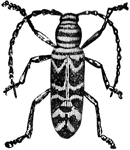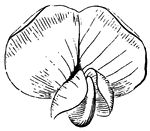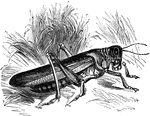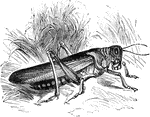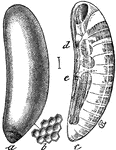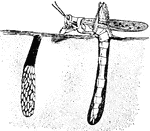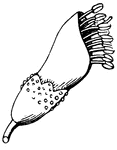Clipart tagged: ‘Locust’

Advance of the Federal Army towards Yorktown
When General McClellan reached Locst Hill, on april 2nd, 1862, he found fifty-eight thousand men and…

Cicada
"In America the cicadas have the general name of Harvest-flies; they are also often improperly…

Grasshopper
The male grasshopper makes noise by rubbing together hard plates on the inside of the thighs.

Female Grasshopper
Grasshoppers are insects of the suborder Caelifera in the order Orthoptera. To distinguish them from…

Grove of black-locust trees
A grove of black-locust trees. Contrast with the brush in the background on an adjoining farm.

Locust
Locusts are in the grasshopper family, although they have shorter legs and antennae. They can be extensively…
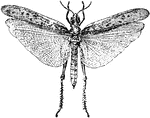
Locust
"The locusts come down in swarms of millions from the warm lands of southern Brazil. There are so many…

Locust
The name of several species of insects allied to grasshoppers and crickets. The term is applied conjointly…

Locust
A group of related genera is call a family. Schistocerca melanocera Stol from Charles Island. Locust…

Locust
A group of related genera is call a family. S. intermedia borealis Snodgrass from Abingdon and Bindloe…

Locust
A group of related genera is call a family. S. intermedia Snodgrass from Duncan Islands. Locust taken…

Locust
A group of related genera is call a family. S. literosa Walker from Chatham Island. Locust taken on…
Locust
A group of related genera is call a family. S. melanocera lineata Snodgrass from Albemarle Island. Locust…
Locust
A group of related genera is call a family. S. melanocera immaculata Snodgrass from Indefatigable Island.…

Locust
Locust is the swarming phase of short-horned grasshoppers of the family Acrididae. These are species…

Locust Anatomy
Enlarged end of the female, showing oviposition: the oviduct, the egg guide, and the egg issuing from…

Locust Blossom Seeds
These are the seeds or racemes of the Locust blossoms, Robinia pseudoacacia,(Keeler, 1915).

Locust development
Post-embryonic development of the Rocky Mountain locust. Successive developmental stage a.

Locust development
Post-embryonic development of the Rocky Mountain locust. Successive developmental stage b.

Locust development
Post-embryonic development of the Rocky Mountain locust. Successive developmental stage c.

Locust development
Post-embryonic development of the Rocky Mountain locust. Successive developmental stage d.

Locust development
Post-embryonic development of the Rocky Mountain locust. Successive developmental stage e.

Locust development
Post-embryonic development of the Rocky Mountain locust. Successive developmental stage f.
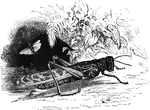
Locusta Cristata
"The migratory locust measures about two and a half inches in length, and some other exotic species…

Locusts
"Locusts, which, from their often collecting in vast swarms, and moving onward with a steady and irresistable…
